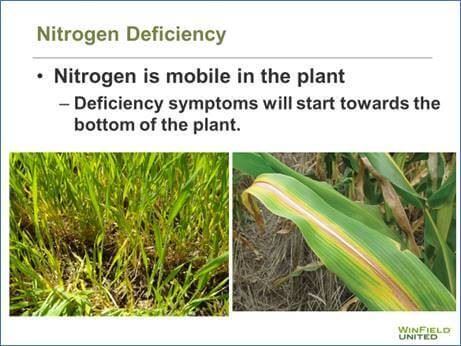Do You Have the Right Crop Nutrient Plan in Place?
Apr 03, 2020

2019 presented a large amount of problems for 2020. Prevent-plant acres, a wet spring and fall, and an early frost all led to issues with crop production that will influence decisions to be made in 2020. We're here to make sure you have the right crop nutrient plan in place to ensure 2020 is a better year.
First, let's talk Nitrogen (N)
-
High amounts of precipitation last fall likely leached and denitrified much of the residual nitrates in the soil.
-
Applying 50-70% of your entire N program pre-plant will allow for in-season applications, while also allowing operational work (such as the application itself) to occur faster.
-
Ensure the N is incorporated at least 2” deep to reduce volatilization. If this isn’t possible, use a stabilizer containing NBPT such as Agrotain Advanced.
-
Use soil and tissue samples, along with a crop model such as Field Forecasting Tool to build in-season N recommendations.
To learn more about managing N click Here.


Next Up: Phosphorus (P):
-
Cool and wet weather led to P deficiencies last spring.
-
Use soil samples from the last couple years to guide where P applications should occur. Applying P on fields that test ‘Low’ and ‘Very Low’ is a no-brainer, and fields that test ‘Medium’ should have P applied if spring conditions are cool and wet.
Use a banded in-furrow starter fertilizer such as 10-34-0 or similar products to deliver P near the roots for the young corn plant.
To learn more about managing P, click Here.

Potassium (K):
-
Soil tests should be used to guide potassium deficiencies. Soils testing ‘Medium’, ‘Low’, and ‘Very Low’ should have K fertilizer applied.
-
It is important to remember both P and K do not move in the soil, so any fertilizer needs to be applied pre-plant and either incorporated or banded to deliver the fertilizer down near the root system.
To learn more about managing K click Here.

Secondary and Micronutrients:
-
Sulfur should be considered any time a nitrogen application is made. Applying a nitrogen:sulfur ratio of 15:1 is a good starting point (as an example: for every 10 lbs of nitrogen you apply, you would apply a pound of sulfur).
-
Tissue samples are one of the most reliable tools to determine in-season sulfur and zinc deficiencies. Plan on tissue sampling your corn around V5-V7 (knee high) to determine the effectiveness of your secondary and micronutrient program.
-
Zinc is the most deficient nutrient found in NutriSolutions tissue testing in the state of South Dakota every season. Applying zinc with starter fertilizer as Ultra-Che Zinc 9%, or Citri-Che Zinc 10%, and applying dry zinc with fertilizer blends are a great starting point. If these aren’t an option, foliar applications of Max-In Zinc can be used to apply zinc in-season.
To learn more about managing sulfur, click Here.

